Prigioni – Prisons
The Lessico Veneto (Venetian Vocabulary) by Fabio Mutinelli was published in 1851. It is an invaluable tool for anybody who reads texts from the time of the Republic of Venice.
Fabio Mutinelli (1797-1876) was director of the I. R. Archivio Generale di Venezia (1847-1861), and a prolific writer on the history of Venice.
Prisons
With a design by Antonio dal Ponte, the construction of this prison began in the year 1589, therefore at the same time as the construction of the Rialto bridge, which, as Temanza said, has, perhaps, not for a large part of Europe in comfort, robustness and magnificence the same. ¶
Previously the prisons were located in the ducal palace, and in Terranova1 for the war captives, and in Rialto, where the magistrates began to give justice and where the people flocked more than elsewhere due to the abundance of workshops, warehouses and merchants, and in several places in the city for debtors, but these, due to the lightness of the loss, are little looked after and poorly equipped. (V. Cason)
PRISONS called the Piombi2 and the Pozzi.3 In ancient times, as we have mentioned, there were some prisons in the ducal palace, especially intended for the custody of those guilty of high treason and other serious crimes, variously called forti, torreselle and orbe. ¶
Forti,4 because they were better guarded than any other prison so that their keys were always kept in the rooms of the doge himself; torreselle5 because they were placed, perhaps, in the place of the four towers with which the palace was crowned in the ninth century; orbe6 because they were devoid of light: nonetheless in times closer to us they were called Piombi and Pozzi. ¶
And to begin with the Piombi, this prison was rightly instituted in the XVI century, as per the following decree «1591 March 15 in the Council of Ten. Our Inquisitors against the propagators of secrets need the room above the Chambers of the Heads, for the imprisonment that they sometimes have to do for someone, for matters pertaining to their Office, and also for someone, who presents himself, and not having what place to give them to ensure their persons, and that they cannot be spoken to, other than the prisons of this Council, too harsh indeed for the detained, and presented, – it is decreed that the aforementioned Inquisitors can avail themselves of the said place above the Chamber of the Heads, both for the detained and for the presented, for the time, and in the way that it will seem best to them, for the occasion however of things pertaining to their aforementioned charge, and this notwithstanding the decision taken in this Council on the first of February 1585.» ¶
This prison was called Piombi because it was the roof of the palace, which was first covered with copper and then with lead sheets. It contained only four cells and no more; one to the west, and facing the courtyard of the palace itself; three to the east and overlooking the canal called rio di palazzo, having been able to recognize despite the very few traces that remain now of these cells, that they were from 1.85 to 2.57 meters high, and from 3.85 to 2.78 meters wide and this for the examinations, which I myself have made of the place together with the very illustrious Francesco Wucovich-Lazzari, professor of architecture in this royal Academy of fine arts. ¶
From a high opening, located in the corridor, light penetrated in part into the first cell through an iron grate, with which each was provided; on the other hand, in the second, since each iron grate was opposite a window of the said corridor, which faced the sea, the prisoner, besides enjoying the benefit of an abundant splendour, could also see a long stretch of the city and breathe through the opening that fresh breeze, which periodically at midday comes from the sea to temper the annoyance of the heat, and for this reason, those poor joys were, in the extreme of his misery, riches. He also used his own clothes and tools, excluding scissors and razors; he ate as he wished, and in the absence of money he received from the State an allowance more than sufficient for his needs.
He could read, but not write, and not keep a lamp lit. At dawn the jailer hurried to serve the prisoners and clean the dungeons; he then returned the keys to the secretary of the Inquisitors of State and did not return there until the following day, and this in order not to draw upon himself, by too frequent a passage, the eyes of those, who, summoned before the tribunal of the Heads of the Council of Ten, stood in his antechamber, called the Bussola (as we have seen), waiting for it to be their turn. ¶
All this clearly appears from the Mémoires de Jacques Casanova de Seingalt (Paris 1843), a very famous Venetian rascal and scoundrel, who was imprisoned in the Piombi on 26 July 1753, and even better from the Histoire de mafuite des prisons de la république de Venise, qu’on appelle les plombs (Leipzig 1788) written by himself in Bohemia in the year 1787. ¶
It can therefore be said that the only studiously observed mystery, more than the harshness and strength, made that prison frightening, and that total solitude was to be the greatest punishment for the prisoners. ¶
Then going down two very short staircases were the rooms of the said Heads of the Council of Ten, and those of the State Inquisitors, in whose hall began another staircase, 0.85 meters wide, which led directly to the prison of Pozzi, which staircase being built inside two intermediate walls, is on one half sparsely lit by some small windows, and on the other completely dark, so that at one point torches are necessary to progress. ¶
It came from this, then, that the aforementioned two magistrates sat almost in the centre of the prisons themselves, and that, by means of those internal and very secret stairs, they made the prisoners appear before them at will, and in the Piombi and the Pozzi they confined them alternately without anyone living being able to notice those various decisions of theirs, nor perchance see who was being held there. ¶
Thus, the mystery increased and with it the terror, the aforementioned stairs marvellously lending themselves to making the latter more felt. For as the terrified criminal moved away from the stern presence of the frowning judges, and as no object appeared before him as he descended, and on the contrary, as he realized that the light was gradually fading away from that palpable darkness, and that the silence was becoming profound and frightening, that painful journey must certainly have seemed longer than it really was, as happens to a man who travels along a solitary and strewn path; and so, having reached the bottom of the prison, it must have seemed to him that he had already fallen into an abyss, when in fact he was only at the level of the nearest canal, and of the adjacent courtyard of the palace, which leads to a small door of the prison itself, located in a corner of the external atrium, which was called the Censors’. ¶
In fact, as Carmagnola claimed, as he (went down the stairs of the palace with the usual escort of gentlemen to go to his boat to go home) was near the said little door, they said to him: «Count, come this way towards the prisons.» Carmagnola answered: «This is not the way.» « This is also the direct way» they added. Whereupon «I see clearly that I am dead,» sighing deeply, Carmagnola exclaimed, immediately saying to the gentlemen who surrounded him «birds that are not to be left, are not to be taken.» Then the door was opened, Carmagnola was already in one of the small rooms of the prison of Pozzi, in those called the Blind. ¶
It is therefore not only a lie, but a very serious slander, which is given to the Venetian Republic if one wants to say, as a modern historian narrated, that the Pozzi are nothing other than very deep holes dug under a canal. ¶
In a corridor with three turns, 1.05 meters wide, and fortified with marble to make any attempt to escape useless, one sees the doors of nine dungeons, 1.22 meters high, 0.70 wide, all marked with Roman numerals, not knowing why the V is always backwards, hence the ninth, the eighth, etc. ¶
They are marked AIIII, AIII, etc.; next to each of these doors there is a round spiracle in the wall with a diameter of 0.21 meters. Only one of the dungeons has an iron grate on the front, towards the corridor; and it is said that from there the executioner twisted the fatal skein around the neck of the criminal, which was to deprive him of life so that it should be considered rather as a room destined for torment. ¶
Then by a staircase of sixteen steps still descending, nine other dungeons are found in a corridor similar to the first: but there the darkness becomes thicker, the air more heavy, the silence more frightening. ¶
In any case, seeing these dungeons lined with larch planks, being high, long and wide as necessary and perhaps more than allowed, and seeing on the walls not a few inscriptions, which do not exclude the idea that the prisoner was sometimes granted the suffrage of a lamp, one must assuage the anger that could have arisen in the soul towards the Venetians, reflecting how this prison, certainly the most rigorous of all, was to be very mild in light of the times, and in comparison with those of some other States.
Translator’s notes
The pilcrows ¶ mark paragraph breaks, which I have added for readability. They are not in the original, which, however, has some very long paragraphs.
- Terranova refers to the area currently occupied by the Marciana Library and the Giardini Reali. In the Middle Ages that area housed, besides a prison, the stables of the Palazzo Ducale and some shipyards. ↩︎
- Piombi literally means lead referring to the roof above which was clad in lead. ↩︎
- Pozzi literally means wells or, more generally, holes in the ground. ↩︎
- Forti means strong, as in high security. ↩︎
- A torreselle is a small tower, as they often appeared in medieval palaces and castles. ↩︎
- In Venetian, orbo means blind. In this context, it means without light. ↩︎
Original Italian text
Prigioni
Con disegno di Antonio dal Ponte si cominciò nell’anno 1589, quindi nello stesso tempo della fabbrica del ponte di Rialto, la costruzione di questo carcere, il quale, siccome diceva il Temanza, non ha, forse, per lungo tratto di Europa in comodo, robustezza e magnificenza l’uguale. ¶
Antecedentemente le prigioni si trovavano nel palazzo ducale, ed in Terranova per i cattivi di guerra, ed a Rialto, ove i magistrati cominciarono a render ragione e dove per la copia delle officine, dei fondachi e dei trafficatori più che altrove formicava il popolo, e in più luoghi della città per sostenere i debitori, essendo però queste, attesa la leggerezza del mancamento, poco guardate, e poco munite. (V. Cason)
PRIGIONI dette i Piombi e i Pozzi. Anticamente, siccome abbiamo accennato, si trovavano nel palazzo ducale alcune prigioni particolarmente, destinate alla custodia dei colpevoli di alto tradimento, e di altri gravi delitti, variatamente venendo chiamate forti, torreselle ed orbe. ¶
Forti, perchè meglio di qualsivoglia altra carcere custodite, di guisa che le chiavi loro serbavansi sempre nelle stanze del doge stesso; torreselle perchè poste, forse, nel luogo delle quattro torri di cui era nel nono secolo coronato il palazzo; orbe perchè prive di luce: nientedimeno nei tempi a noi più vicini furon dette Piombi e Pozzi. ¶
E per incominciare dai Piombi fu giustamente questa prigione instituita nel XVI secolo, come dal seguente decreto « 1591 15 marzo in Consiglio dei X. Occorrendo alli Inquisitori nostri contra li propalatori di secreti bisogno del luoco sopra le Camere dei Capi, per l’intertenir che alle volte convien loro di fare qualcheduno, per cose spettanti all’ Officio suo, et anco per alcuno, che si appresentasse, nè avendo che luoco darle per assicurarsi delle loro persone, et che non le possa esser parlato, che le prigioni di questo Consiglio, troppo aspre invero alli intertenuti, et presentati, – l’anderà parte che possino i predetti Inquisitori valersi del detto luoco sopra la Camera dei Capi, tanto per li intertenuti quanto per li presentati, per quel tempo, et in quel modo che lor parerà, per occasion però de cose spettante al suo carico predetto, et questo nonostante la parte presa in questo Conseglio a’ primo febbraro 1585 ». ¶
Denominato questo carcere dei Piombi per essere a tetto del palazzo, il quale essendo prima coperto di rame lo fu poi di lamine di piombo, quattro sole segrete esso conteneva e non più; una volta ad occaso, e rispondea sul cortile del palazzo medesimo; tre ad oriente e riuscivano sopra il canale detto rio di palazzo, avendo potuto riconoscere ad onta delle pochissime tracce che rimangono adesso di queste segrete, ch’esse fossero alte da metri 1,85 a 2,57, е larghe da metri 3,85 a 2,78 e ciò per gli esami, ch’ io stesso ho fatto sulla faccia del luogo unitamente al chiarissimo Francesco Wucovich-Lazzari, professore di architettura in questa regia Accademia di belle arti. ¶
Da un elevato abbaino, situato nel corridoio, penetrava a spizzico nella prima segreta la luce per una ferrata, di cui ciascheduna andava munita; al contrario nelle seconde, trovandosi ogni ferrata dirimpetto ad una finestra del detto corridoio, che guardava verso il mare, il prigioniero, oltrechè godere del beneficio di un abbondante splendore, poteva scorgere eziandio lungo tratto della città e respirar nella canicola quel fresco venticello, che periodicamente in sul meriggio viene dalla marina ad attemperar la molestia del caldo, e per ciò quelle povere gioie erangli , nell’estremo di sua miseria, ricchezza. Usava egli inoltre vesti ed arnesi proprii, escluse però forbici e rasoi; cibavasi a talento, e in difetto di danaro riceveva dallo Stato un assegnamento più che bastante a’ suoi bisogni.
Poteva leggere, non iscrivere, non tenere accesa lucerna. In sul far dell’alba affrettavasi il carceriere di servire i prigionieri e di mondar le segrete ; indi riconsegnava le chiavi di quelle al segretario degl’ Inquisitori di Stato e non vi ritornava che nel seguente giorno, e ciò per non tirarsi addosso, con un troppo frequente passaggio, gli occhi di coloro, i quali chiamati innanzi al tribunale dei Capi del Consiglio dei Dieci stavano nell’ anticamera di lui, la Bussola (siccome abbiam veduto) appellata, aspettando che toccasse la lor volta. ¶
Tutto ciò chiaramente appare dalle Mémoires de Jacques Casanova de Seingalt (Paris 1843), discolo e furfante Veneziano assai famoso, che a ‘ di 26 luglio 1753 fu imprigionato nei Piombi, e meglio dalla Histoire de mafuite des prisons de la république de Venise, qu’on appelle les plombs (Leipzig 1788) scritta da lui stesso in Boemia l’anno 1787. ¶
Può dirsi pertanto, che il solo arcano studievolmente osservato, più che l’ asperità e la forza, spaventosa facesse quella carcere, e che una solitudine totale fosse per essere la maggior pena dei carcerati. ¶
Scese poscia due scale assai corte si trovavano le stanze dei detti Capi del Consiglio dei Dieci, e quelle degl’ Inquisitori di Stato, nel cui audito avea principio un’altra scala, larga metri 0,85, che metteva direttamente alla prigione dei Pozzi, la quale scala essendo costrutta nell’ interiore di due intermedic muraglie, è per una metà radamente illuminata per alcune finestrelle, e per l’altra affatto buia, in guisa che ad un punto necessarie sono le faci per progredire. ¶
Veniva adunque da ciò, che i sopraccitati due magistrati sedessero quasi nel centro delle carceri stesse, e che, per mezzo di quelle scale interne e segretissime, comparir facessero innanzi a loro a piacimento i prigionieri, e nei Piombi e nei Pozzi li confinassero a vicenda senza che vivente potesse accorgersi mai di quelle diverse loro deliberazioni, nè scorgere, per avventura, chi fosse ivi entro ritenuto. ¶
Così accrescevasi l’arcano e con esso il terrore, maravigliosamente poi prestandosi a rendere più sensibile quest’ultimo le scale anzidette. Imperocchè dal cospetto severissimo degli accigliati giudici discostandosi, l’atterrito reo, e non affacciaudoglisi nello scendere oggetto alcuno, anzi all’opposto avvedendosi che gli venia manco a poco a poco la luce, sottentrare a quella tenebre palpabili, e il silenzio farsi alto e spaventoso, doveagli certo apparire più lungo del vero quel doloroso tragitto, siccome avviene ad uom, che per cammino sparso di triboli e solitario trascorra; giunto quindi all’imo della carcere sembrare pur doveagli di esser già precipitato in un abisso, quando invece non era che al livello del prossimo canale, e della contigua corte del palazzo, cui mette un usciolino della prigione medesima, situato in un canto dell’esterno atrio, il quale dei Censori dicevasi . ¶
Di fatto, quando si volle sostenere Carmagnola, com’ egli (scese le scale del palazzo col solito accompagnamento di gentiluomini per avviarsi alla sua barca affin di ridursi a casa) fu vicino al detto usciolino, gli si diceva: « Signor conte, venga di qua alla volta delle prigioni. » Rispondeva Carmagnola : « Questa non è la via ». « Questa è pure la via diretta » gli si soggiugneva . Onde « veggo bene ch’io son morto » altamente sospirando, esclamava Carmagnola, dicendo tosto ai gentiluomini che lo circondavano « uccelli che non sono da lasciare, non sono da prendere » . Aperto allora l’uscio, era già Carmagnola in un dei camerotti della carcere dei Pozzi, in que’ di l’Orba appellata. ¶
Ella è dunque non solo menzogna, ma calunnia gravissima, che si rende alla veneziana repubblica ove si voglia dire, come narrava un istorico moderno, altro non essere i Pozzi, che profondissime buche scavate sotto un canale. ¶
In un corridoio a tre svolte, largo metri 1,05, e fortificato di marmo per rendere inutile ogni opera di tentativo di fuga, vedonsi per tanto le porte di nove segrete, alte metri 1,22, larghe 0,70, tutte segnate con numeri romani, non sapendo per qual motivo il V sia sempre rovescio, laonde la nona, l’ottava ecc. ¶
Son segnate cosi AIIII, AIII ecc.; a canto di ciascheduna di queste porte ha nel muro uno spiracolo rotondo del diametro di metri 0,21. Una sola delle segrete ha nella faccia, che risponde all’ andito, una ferrata; e vuolsi che da quella il carnefice attortigliasse al collo del reo la fatale matassa, che dovea privarlo di vita, di guisa che essa considerare si dee piuttosto come stanza destinata al tormento. ¶
Indi per una scala di sedici gradi ancor discendendo, altre nove segrete si trovano in un corridoio simile al primo: ma colà si fanno più fitte le tenebre, l’aria più grave, più spaventoso il silenzio. ¶
Ad ogni modo intavolate vedendosi di panconi di larice queste segrete, essendo alte, lunghe e larghe quanto il bisogno e forse più lo comportasse, e scorgendosi sulle pareti non poche inscrizioni, che non escludono la idea che si concedesse al prigioniero alcuna volta il suffragio di una lampada, ammorzar devesi il cruccio ch’esser potesse sopravvenuto nell’animo verso i Veneziani, riflettendo come questa carcere, fra tutte certamente la più rigorosa, fosse per essere molto mite in ragione dei tempi, e in confronto di quelle di alcuni altri Stati.
Related articles
- Però l’anderà parte — vadit pars
- Fornicators of Nuns
- An earl, a girl and a gondola
- Monachini, Moneghini — Lessico Veneto
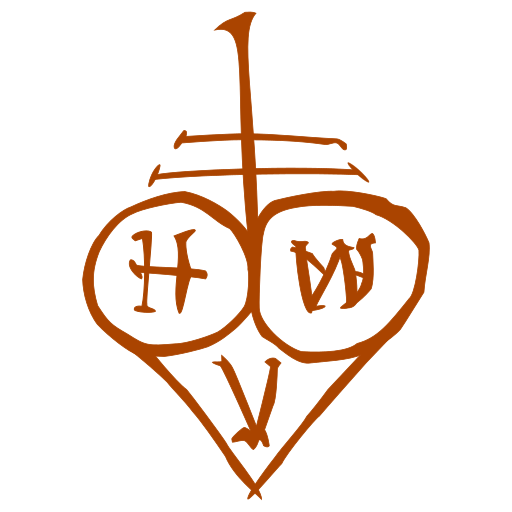
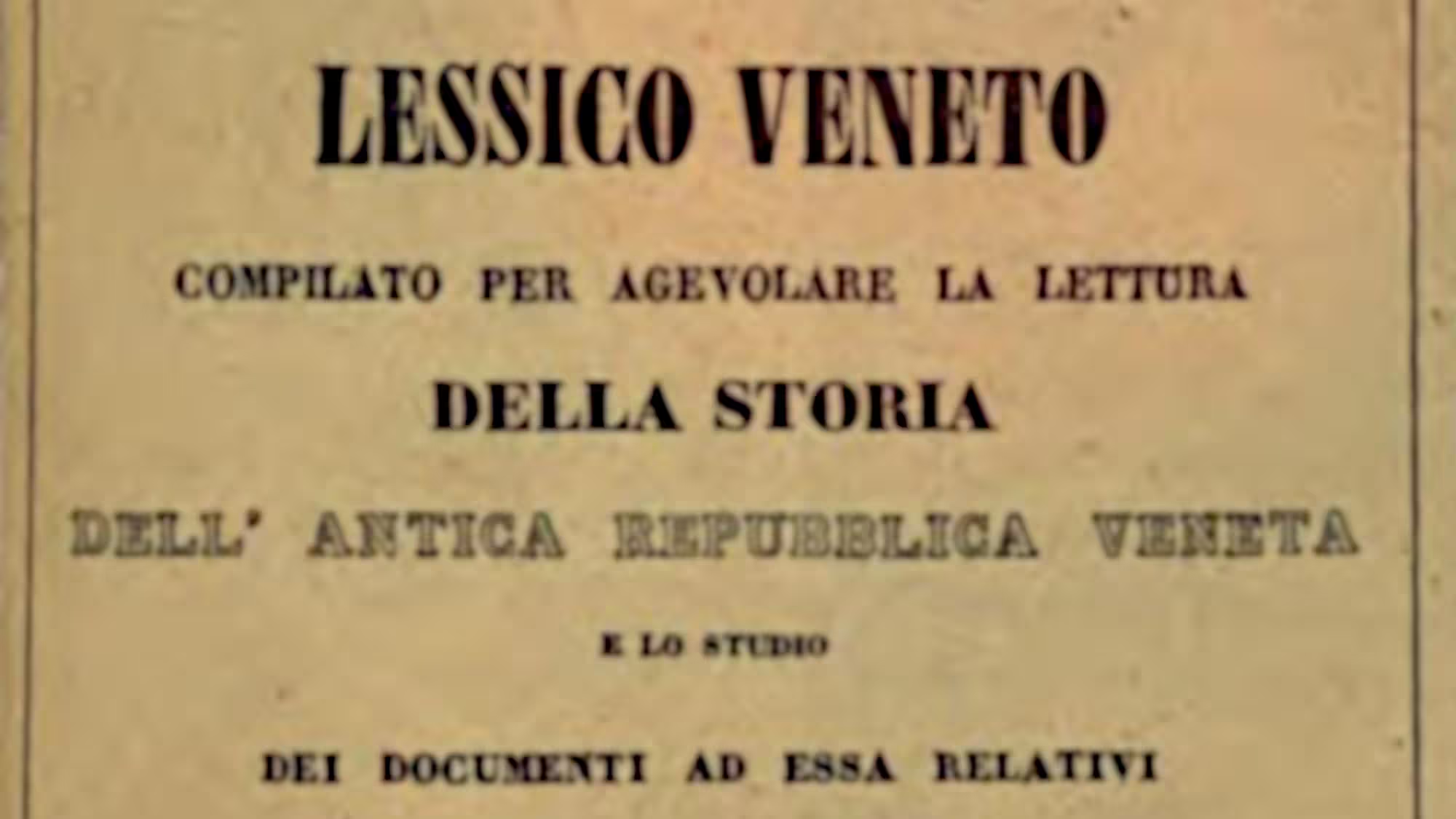
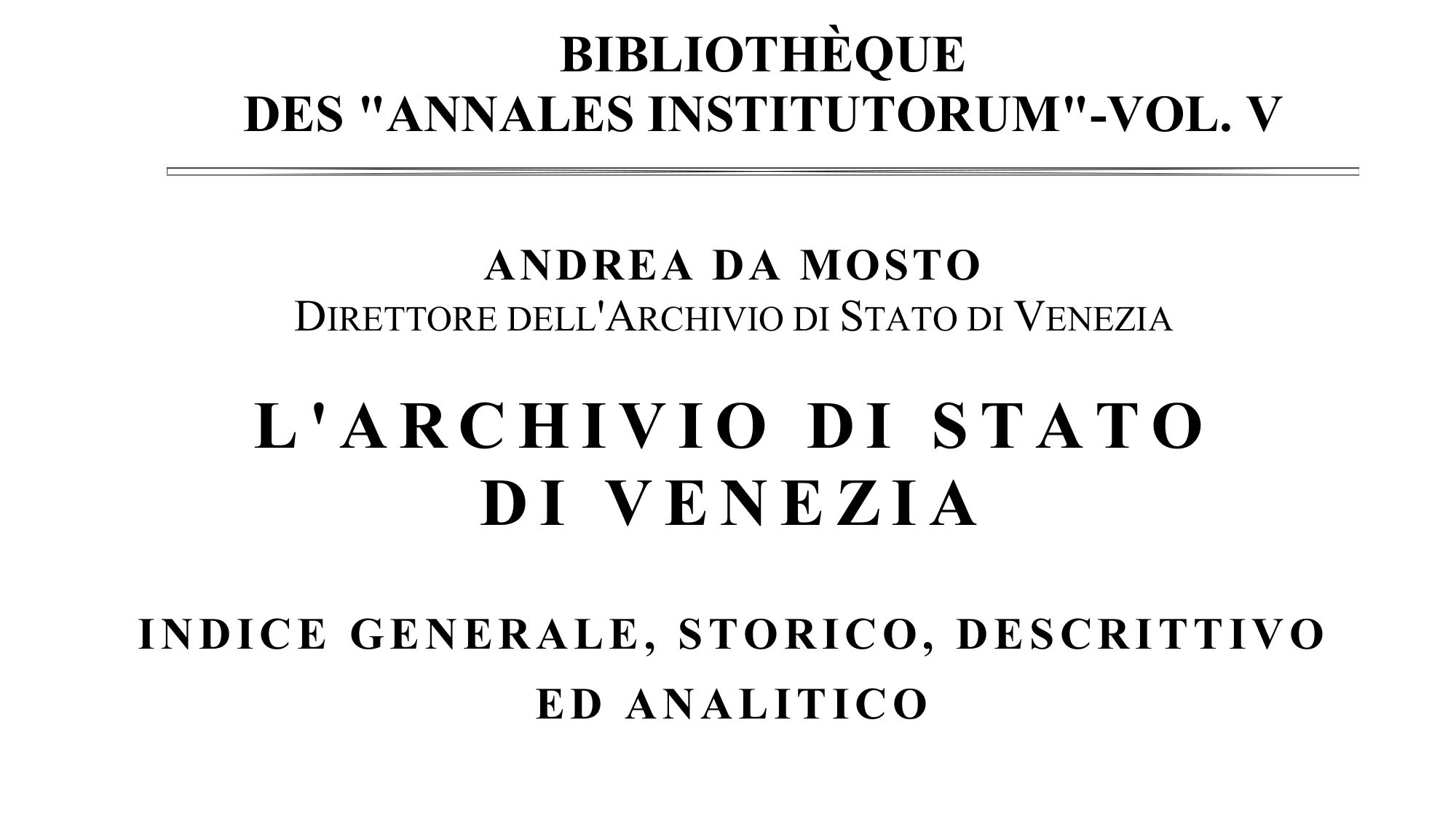
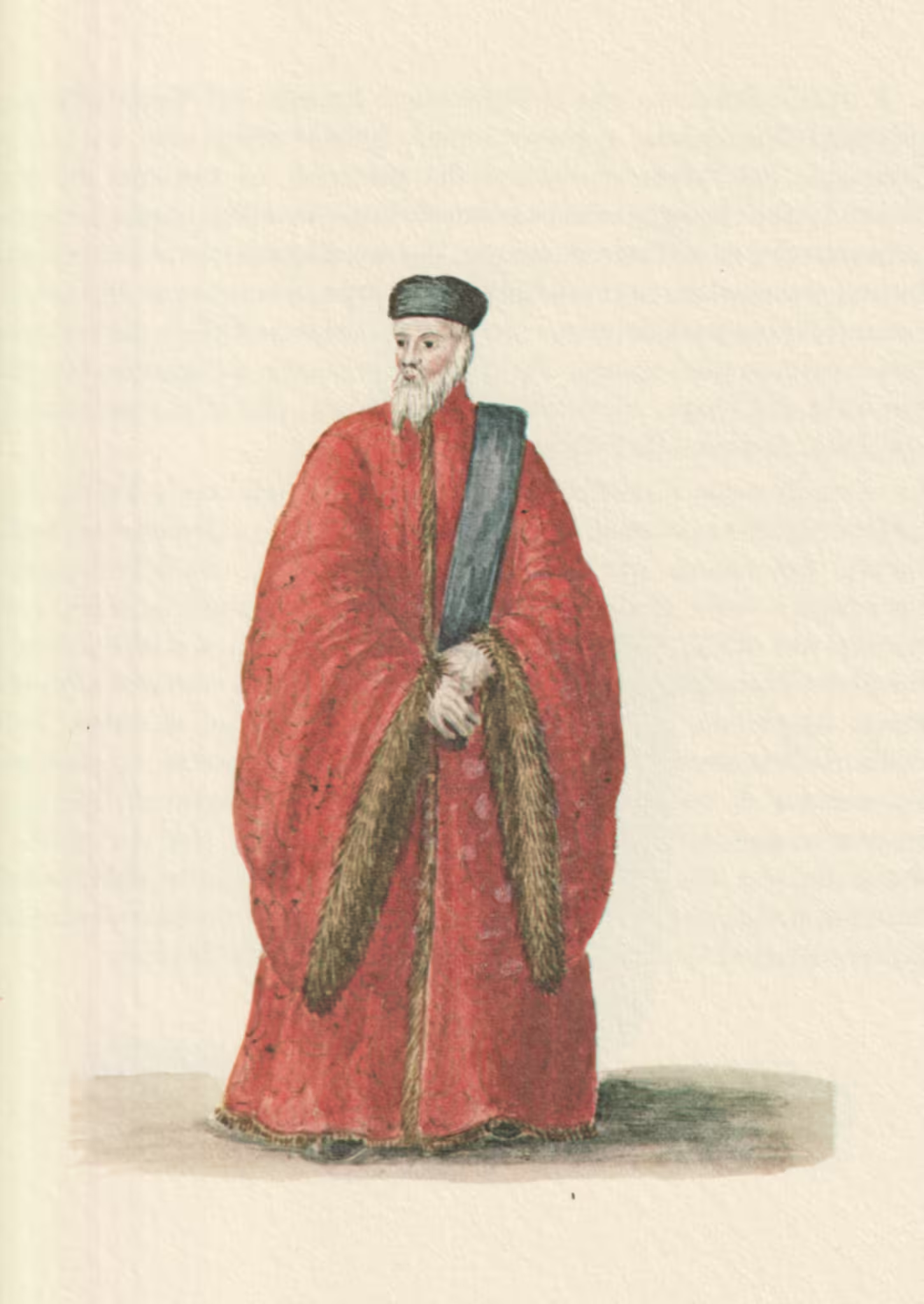
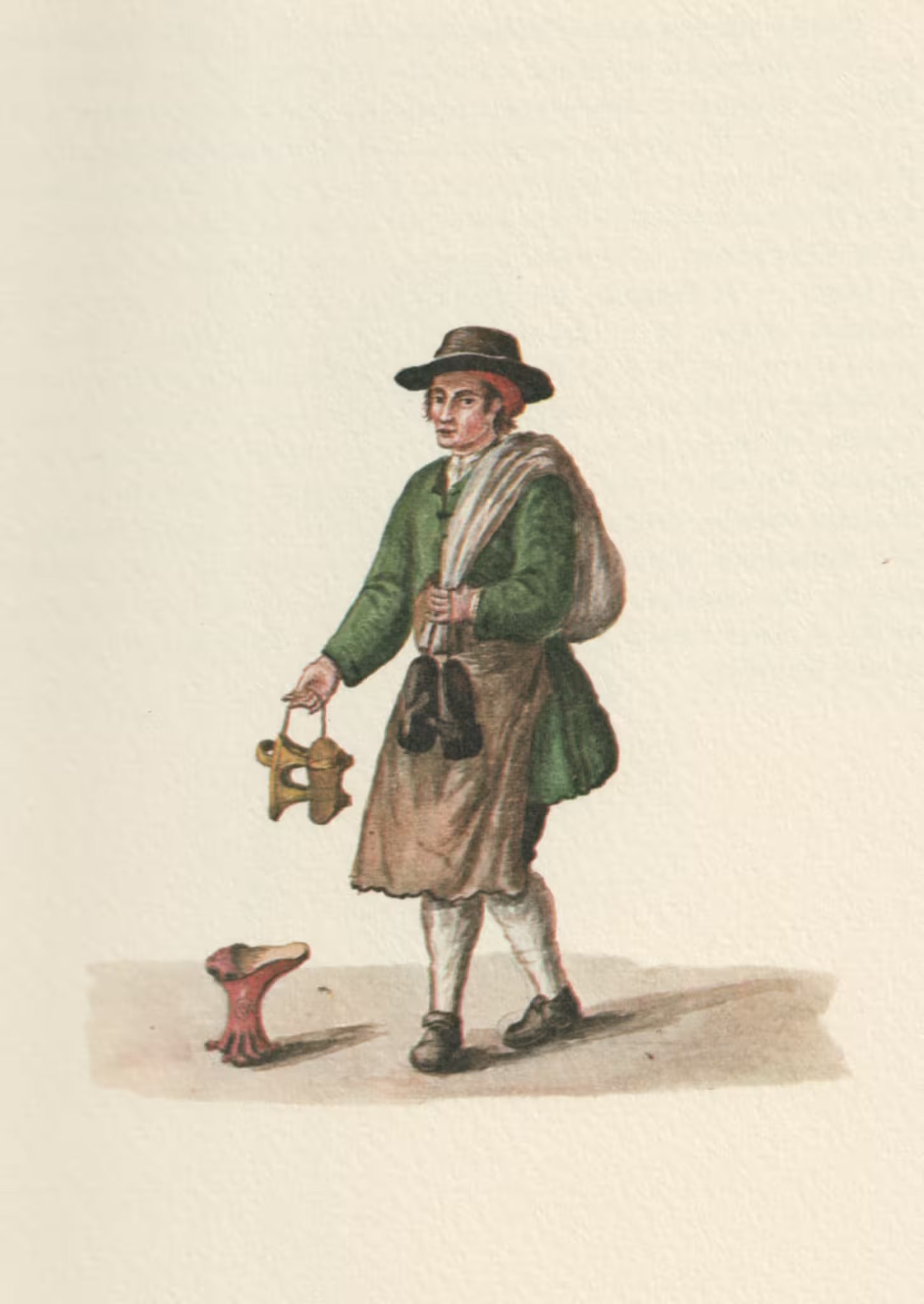
Leave a Reply